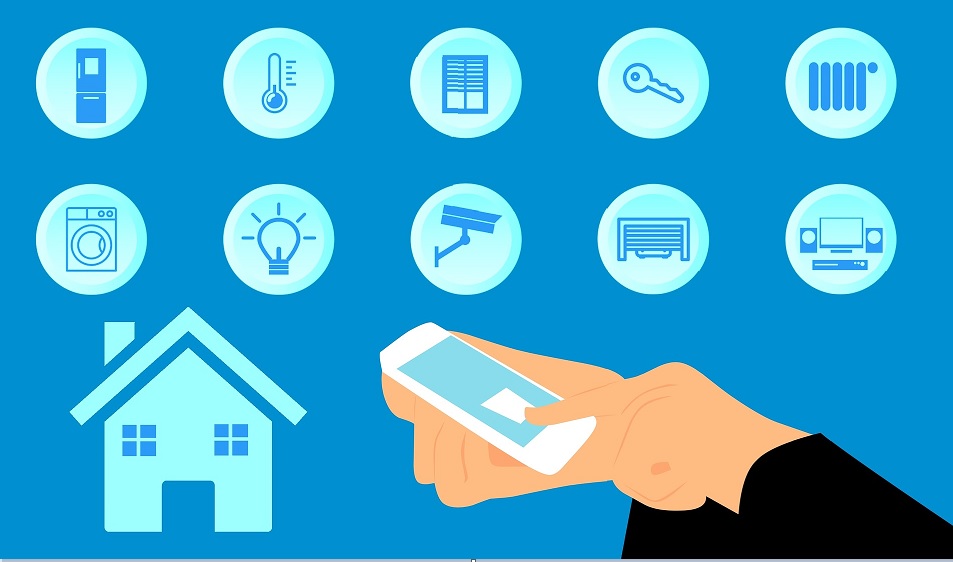Home automation: what it is and how it works?

August 21, 2020
Home automation also known as smart house, smart home or domotic derived from Latin domus meaning house and from Greek αυτονόμος meaning autonomous. Automation refers to a set of technological processes and systems that do not require greater human participation far beyond triggering or monitoring it. Nowadays, thanks to computing and robotic advances have significantly improved automation scope reaching to address any area, even our own home. In this article, we will be learning about home automation. What it is? How does home automation works? What advantages have if we use it? What we have to consider in order to begin automate our home?
What it is home automation?
Home automation refers to automatic and electronic control of activities and household appliances functions; it is a set of systems capable to automate a home or building by an intelligent technology integration of its common-use devices. These technologies purpose is to make our homes more comfortable, safer, ecological and hence our lives easier: we can simply ask turn on our living room light just sending a command through voice or pushing a button in an app. As automation grows, more electronic devices are being automated; so at this time it already provides energy, well-being, security and communication remote control.
A smart home is built by integrating all every-day devices between them and that can be reached and controlled remotely without need any physical operation. When this is connected to Internet, it becomes a part of what is today called Internet of Things (IoT)
How home automation works?
In simpler words, home automation system works by connecting smart devices through a network, frequently through a Wi-Fi but it can be wired too. These devices are integrated by network communication protocols both internal and external. Home automation systems are made up of hardware, software and electronic interfaces that work to integrate electrical equipment with each other; usually, it connects controlled appliance to a central hub. Main home automation components can be classifieds in sensors, controllers and appliances:
Sensors
A sensor is any device or physical element that can send a signal to a central measurement or control system when there is a change in some of its environment parameters. First, users can adjust sensors settings levels as they prefer in order to monitor personalized changes in daylight, door opening, motion detection, temperature, among others. There are different sensor types toward environment measurement such as presence, magnetic, smoke, flood or twilight. For example, we might know if our home is well heated or if there is someone has entered to the house.
Controllers
A controller is an information unit that collect sensors signals. It receives information from sensors about automated functions status in home, store and process them in order to generate instructions that sends to appliances or smart devices connected, which are last main components in the automation chain.
Appliance or smart devices
An appliance or smart device is a gadget that executes orders received from controllers. It performs the action requested on a specific, mostly physical, element at home like door, thermostat, and so on. This device can be hydraulic, electric, pneumatic or electronic, and there is a wide range of things that can be addressed, mentioning just a few: heating, ventilation and air conditioning; lighting control system; occupancy-aware control system; home robots and security; leak detection, smoke and CO detectors; smart kitchen and refrigerators, and so many others.
There are three architectures possible from where the home automation system intelligence resides:
- Centralized where a central controller receives information from multiple sensors and generates appropriate orders to devices.
- Distributed where all system intelligence is distributed by each participating module, be they sensors or devices. It is usually typical of bus cabling systems, or wireless networks.
- Mixed where systems with decentralized architecture have several small devices capable of acquiring and processing information from multiple sensors and transmitting them to the rest of distributed devices throughout the house.
What can we automate in home?
Nowadays, home automation can reach entire control range in a smart house. It offers a variety of services and functions covering these main areas: programming and energy saving, security, comfort, communications, accessibility and well-being:
- Lighting control systems.
- Blinds and curtains automation.
- Heating, ventilation and air conditioning systems.
- Home security systems.
- Irrigation systems.
- Occupancy-aware control systems.
- Smart appliance control and integration systems.
- Leak detection, smoke and carbon monoxide monitoring systems.
- Indoor positioning systems (IPS).
- Home automation for the elderly and disabled.
- Pet and Baby Care.
- Air quality control.
- Smart Kitchen and Connected Cooking.
- Live video monitoring.
- Communications systems.
- Real-time email and text message alerts.
Home automation advantages
Generally speaking, home automation biggest benefits are energy efficiency, safety, comfort and convenience such by:
- Time and cost savings, for example by reducing the amount of time lights are on.
- Improved production.
- Development of dangerous tasks by machines and not by workers and, therefore, improvement of employee safety.
- High quality levels.
- Competitive advantage.
- Remote management on desktops, laptops, tablets or smartphones.
- Alert events triggering in real time.
- Automatic scenes according to time or events at home.
Considerations on home automation
Before we decide into invest make our home smart, we have to know in order to an intelligent investment what do we want to automate? What kind of problems we like to solve with? What approach it suits better for our needs? Also, we have to take in consideration our home characteristics such as dimensions and how many automation capable areas there are and if they are inside or outside doors, weather, location and internet access they have, even how many people will be living there.
Home automation is a process that have to be well planning in order to reduces cost and efforts. A good start is to look for scalable and modular solutions that can be growing as needed, with an easy user interface and keeping in mind which architecture and installation approach it suits better for our case. A cons is that there are many providers but just a few worldwide accepted standards, that is why vendors and manufacturers often prevent independent implementations.
Most important of all, whatever the approach we choose to be, we have to make our home automation system safe by ensuring our router security, keeping our devices updated, sticking with reputable providers, having a secure password, IP access and monitoring policy.
Now, home automation well-being is possible
Now that we know what is and how works home automation, we can conclude that well-being is even more possible thanks to these technologies because they can really make our home a more comfortable place and lend towards a more relaxed life by taking off of our minds minor activities and things to be thinking of in our everyday tasks. Having a smart home allows us to manage our home with least amount of time and effort.
We just have to find the automation system that suits better for our lifestyle, set some things and let home taking life itself just as we wanted!








